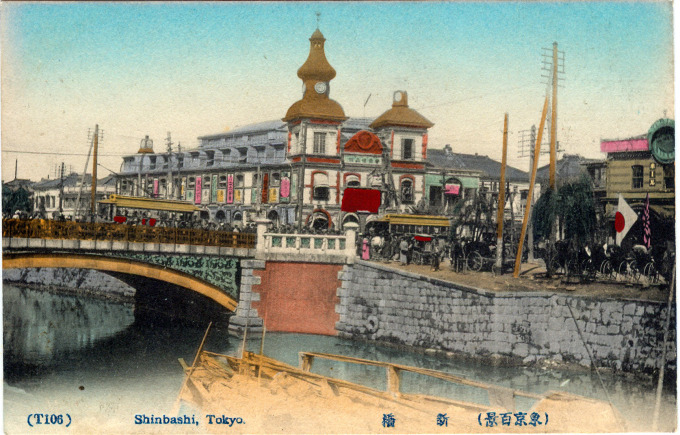
Shimbashi Bridge, c. 1910, erected in 1899. Across from which is Hakuhinkan, first opened in 1899 and now the largest toy store in Japan.
See also:
Teikoku Hakuhinkan (Imperial Esteemed Goods Hall), Shimbashi, c. 1905.
Taxi Dancers, c. 1930
Tokyo Gekijo (Theater), c. 1930
Shimbashi Station (Kasumori)
“Modern history buffs would be advised to continue on down to Shimbashi, where it is still possible to walk through the inviting backstreets beyond the JR station and see undemolished sections that date back forty years.
“The narrow alleyways of 2-chome are lined on both sides with an uncountable variety of restaurants and [watering holes] for every taste, and even the occasional coffee shop. By late afternoon the alleys are filled with smoke from what seem to be hundred charcoal fires broiling and frying away, with the attendant smells of beef and chicken and pork dishes of every sort, and chestnuts roasting as well.”
– Tokyo Stories: A Literary Stroll, edited by Lawrence William Rogers, 2002
The Shimbashi [new bridge] district, during the early years of the Meiji Era, was best known for its geisha houses [karyukai] and restaurants. Sandwiched between the Foreign Settlement at Tsukiji to the east and the Kasumigaseki government district to the west, Shimbashi catered primarily to the fancies of Japan’s new bureaucrats and statesmen (including a prime minister or two).
- Electric streetcar glides across Shimbashi, c. 1905. Routes #1 (Shinagawa-to-Ueno via Shimbashi & Ginza) was the first streetcar routes electrified.
- Patriotic display of flags at Shimbashi, c. 1905.
- The view of Shimbashi and Shibaguchi Streets, c. 1910, looking southwest. Shimbashi terminal is in the distance (right); Atago Hill is beyond.
- “Great sight of Ginza”. An elevated view looking northeast from Shimbashi, along Ginza-dori, c. 1915.
Though considered less sophisticated and more low-rent by reputation than Yoshiwara (but more exclusive than Akasaka), Shimbashi nonetheless embraced the country’s new-found modernity becoming the ‘Gateway to Ginza’ (and, thus, the literal gateway to Tokyo’s “modern era”) with the completion of Japan’s first railway in 1872 and the siting of the main Tokyo railway terminals within the district – first, at Shiodome (1872-1910), then at Kasumori (1910-1923).
- The Shimbashi Station (Kasumori), c. 1920. Elevated view, with Atago Hill in the distance.
- Nighttime view of Shimbashi Station, c. 1955.
Shimbashi’s location also made the district a natural base for manufacturing and commercial innovation during the Meiji period. Among the first Japanese manufacturing companies founded at Shimbashi was Tanaka Seizo-cho [Tanaka Engineering Works, Co.], by Tanaka Hisashige (the “Thomas Edision of Japan”), in 1874, to build Japan’s first telegraphic equipment. His company would later merge with nearby Kyobashi-based Tokyo Denki [Tokyo Electric Co.] to form Toshiba in 1939.
The first horse-drawn streetcars in Tokyo traversed Shimbashi between Shinagawa and Nihonbashi in 1877, marking another technological advancement for Tokyo in the Meiji period. Further progress arrived in 1903 with the introduction of the electric streetcar. Route #1, running from Shinagawa to Ueno through Shimbashi and up Ginza-dori, was the first route to be upgraded.
Shimbashi was not without its cultural progress, too. Kabuki theater was returned to the city after the Restoration (after Tokugawa banishment to the Asakusa hinderland in the 17th-century) with the opening of the Kabuki-za in 1889, ushering in a new, innovative era of Japanese theater. A contemporary Kabuki venue, the Shimbashi Embujo, began hosting spring and autumn performances of singing and samisen-playing geisha in 1925 but served otherwise, too, as a “taxi-dancing” emporium.


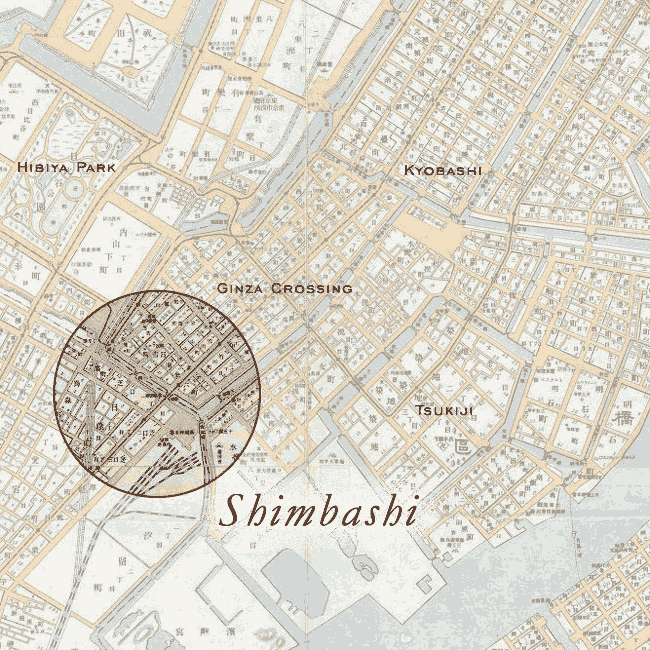
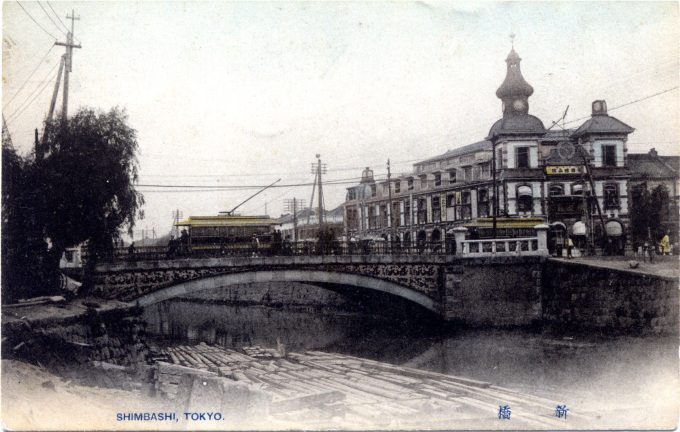
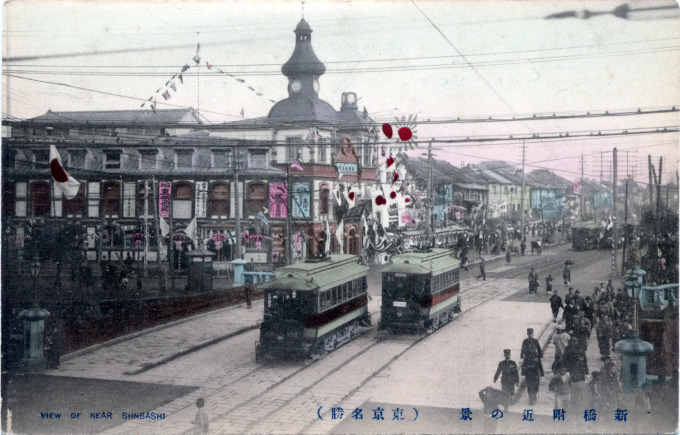
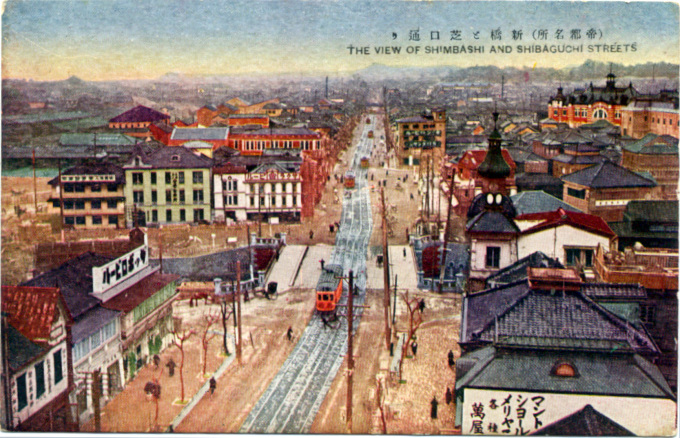
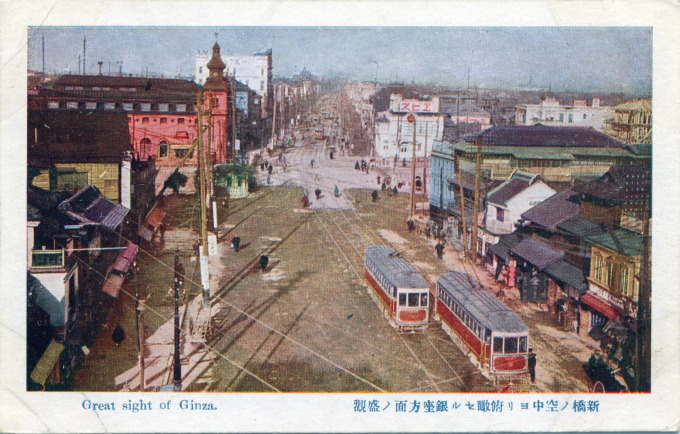
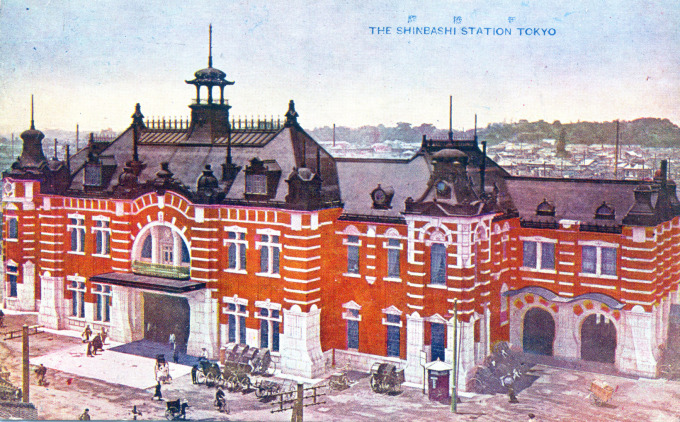
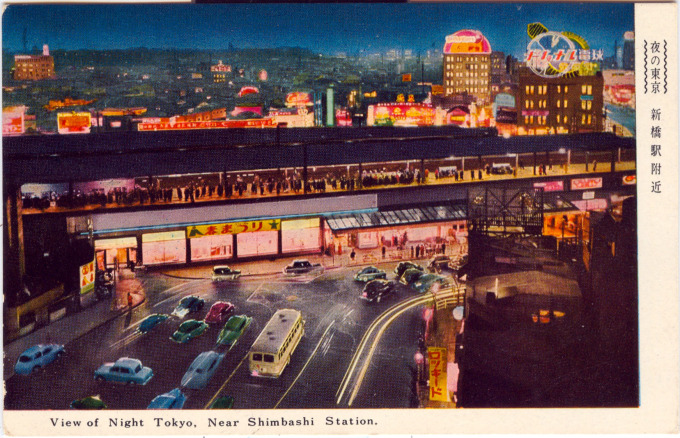
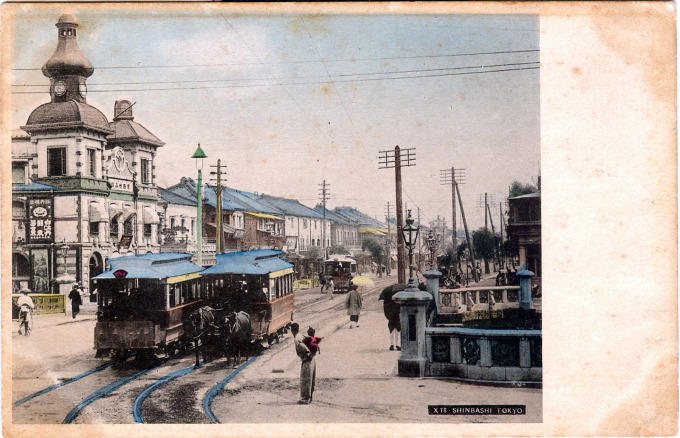
Pingback: Shimbashi Station (Shiodome), 1872-1912. | Old Tokyo
Pingback: Teikoku Hakuhinkan (Imperial Esteemed Goods Hall), Shimbashi, c. 1905. | Old Tokyo